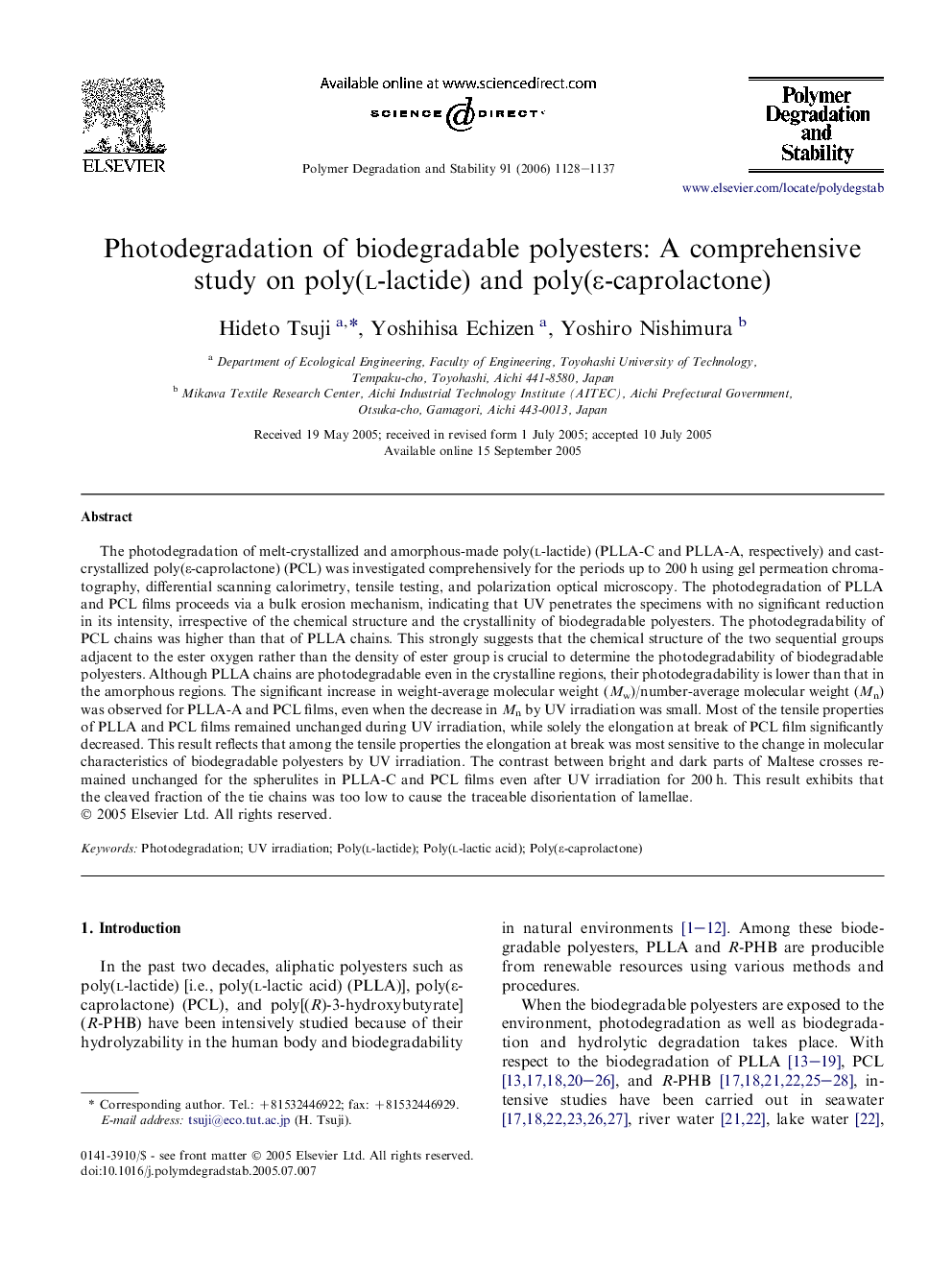| Article ID | Journal | Published Year | Pages | File Type |
|---|---|---|---|---|
| 5204718 | Polymer Degradation and Stability | 2006 | 10 Pages |
Abstract
The photodegradation of melt-crystallized and amorphous-made poly(l-lactide) (PLLA-C and PLLA-A, respectively) and cast-crystallized poly(É-caprolactone) (PCL) was investigated comprehensively for the periods up to 200Â h using gel permeation chromatography, differential scanning calorimetry, tensile testing, and polarization optical microscopy. The photodegradation of PLLA and PCL films proceeds via a bulk erosion mechanism, indicating that UV penetrates the specimens with no significant reduction in its intensity, irrespective of the chemical structure and the crystallinity of biodegradable polyesters. The photodegradability of PCL chains was higher than that of PLLA chains. This strongly suggests that the chemical structure of the two sequential groups adjacent to the ester oxygen rather than the density of ester group is crucial to determine the photodegradability of biodegradable polyesters. Although PLLA chains are photodegradable even in the crystalline regions, their photodegradability is lower than that in the amorphous regions. The significant increase in weight-average molecular weight (Mw)/number-average molecular weight (Mn) was observed for PLLA-A and PCL films, even when the decrease in Mn by UV irradiation was small. Most of the tensile properties of PLLA and PCL films remained unchanged during UV irradiation, while solely the elongation at break of PCL film significantly decreased. This result reflects that among the tensile properties the elongation at break was most sensitive to the change in molecular characteristics of biodegradable polyesters by UV irradiation. The contrast between bright and dark parts of Maltese crosses remained unchanged for the spherulites in PLLA-C and PCL films even after UV irradiation for 200Â h. This result exhibits that the cleaved fraction of the tie chains was too low to cause the traceable disorientation of lamellae.
Related Topics
Physical Sciences and Engineering
Chemistry
Organic Chemistry
Authors
Hideto Tsuji, Yoshihisa Echizen, Yoshiro Nishimura,
